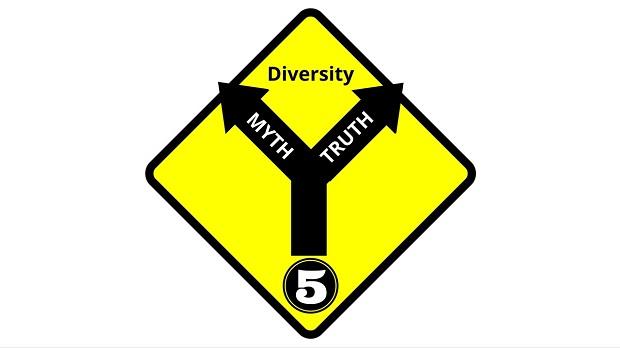With the recent increase in hate crimes against the AAPI community — including the tragic killing in Atlanta, Georgia, of six Asian American women — organizations find themselves again at a critical inflection point in the fight against white supremacy. New data released by the Stop AAPI Hate reporting center showed that nearly 3,800 hate incidents were reported over the last year, with businesses being the primary site of discrimination. Over the last few weeks, statements from organizations like Microsoft, Nike and Amazon have rolled in, calling to #StopAsianHate and provide a message of solidarity to the AAPI community. These public sentiments, reminiscent of the spectrum of responses following the murder of George Floyd, gave me pause as I reflected on a question Brittany J. Harris posed to leaders and organizations looking to engage in truth telling and reconciliation as it relates to dismantling racism:
“Am I using language that makes it clear WHO is taking ownership, who has been complicit, who needs to do more work in this process?”
In organizations, who is responsible for advancing anti-racism work that centers justice, and how are those expectations set? According to a 2020 report from SHRM, 45% of Black workers and 30% of white workers report that their workplace actively discourages discussion of racial justice issues at work. As more organizations take public stances in fighting racism, it’s imperative that anti-racism is an expected competency of all employees, both current and prospective. When organizations are recruiting for a new role, how important is a candidate’s commitment to anti-racism and advancing the organization’s DEIJ efforts?
As more organizations take public stances in fighting racism, it’s imperative that anti-racism is an expected competency of all employees, both current and prospective. Click To TweetI was curious to see just how many organizations were naming anti-racism in their postings — whether as an expected skill, or an organizational commitment. Of the 5,650,849 job postings on LinkedIn, just 1,128 results appear when one searches ‘anti-racism,’ and 2,076 results appear for ‘anti-racist.’ Many of the postings were for DEIJ–centered positions or roles falling within HR departments. A few incorporated anti-racism language into their broader company overviews, making statements such as: “We are an anti-racism organization.” I started reflecting, not only on the hesitancy to use this language outright, but also on whether organizations committing publicly to anti-racism are stating these expectations during the hiring process.
If organizations are truly committed to doing the work of ending racism, it’s important to start sharing this commitment from the beginning of the employee’s lifecycle — with the job posting. Many DEIJ efforts in hiring incorporate important initiatives like mitigating bias, using inclusive processes and intentionally diversifying candidate pipelines. Yet, there is a lack of dialogue on how organizations assess and communicate their expectations of employees to be arbiters of their DEIJ efforts — especially for white employees and senior leaders who must leverage their power and privilege to disrupt systems of oppression in their workspaces. To operationalize justice, these conversations should begin before an employee is even hired. Here are some prompting thoughts for organizations to consider as they continue to embed DEIJ into every aspect of their hiring process.
1.) Consider language. Language surrounding DEIJ historically has been watered down to “make this work more palatable” writes Scott Ferry, with organizations centering language like “diversity of thought” and “belonging.” A search of the term “inclusive” on LinkedIn, for example, returns 400,977 results. If you post publicly committing the organization to ending racism, is anti-racism incorporated in your hiring processes and development opportunities? If the language used during the hiring process has been more focused on broader terms like celebrating diversity, leaders should commit to understanding and embedding knowledge of systems of oppression — and how dismantling white supremacy through anti-racism is an inevitable facet to true justice. Providing this language upfront to new and potential employees sets the expectation of exactly where the organization is in ‘doing the work’ — and validates these public–facing statements.
Leaders should commit to understanding and embedding knowledge of systems of oppression - and how dismantling white supremacy through anti-racism is an inevitable facet to true justice. Click To Tweet2.) Consider responsibility. Too often, the work of advancing an organization’s DEIJ efforts falls solely on the shoulders of the organization’s HR or People Operations department. As an organization, how can you be intentional in embedding these responsibilities across the enterprise? If a commitment to inclusion and anti-racism is an organizational value, is this reflected in job postings for all positions? Are HR and learning and development folks expected to be “anti-racist” while other employees or senior leaders should merely focus on “diversity of thought”? Incorporating DEIJ competencies like anti-racism in all job descriptions sets the expectation that whether you work as an engineer, an executive leader or an HR professional, being actively anti-racist is a shared responsibility, especially for folks with privilege and power. Likewise, including situation-based interview questions focused on anti-racism allows for gauging candidates’ commitment to values like justice and inclusion. What would it communicate about the organization’s commitment to justice and what could be learned about a candidate’s values if we normalized asking (during interviews): “Tell me about a time you chose to advocate for a community that has been historically excluded.” OR “How do you model inclusion and justice in your leadership and management style?” OR “How do you define diversity, equity, and inclusion? What is your commitment to these values beyond the workplace?”
Incorporating DEIJ competencies like anti-racism in all job descriptions sets the expectation that whether you work as an engineer, an executive leader, or an HR professional, being actively anti-racist is a shared responsibility. Click To Tweet What would it communicate about the org's commitment to justice and what could be learned about a candidate’s values if we asked during interviews: 'Tell me about a time you chose to advocate for a community that has been… Click To Tweet3.) Consider the through-line. Many organizations confront DEIJ work as supplemental training or development, but they miss a great opportunity to create a through-line of their efforts where DEIJ is embedded from the start. When discussing the organization’s offerings to a prospective employee, are the company’s DEIJ efforts front and center — or do they not learn about these initiatives until well into their tenure? Does the new employee know from the beginning how they will be expected to play an active role in these efforts? This intentionality signals to a new employee that DEIJ and anti-racism efforts are not just a checklist training items — but instead a daily commitment that starts on day 1, no matter the nature of their work.
Many organizations confront DEIJ work as supplemental training or development, but they miss a great opportunity to create a through-line of their efforts where DEIJ is embedded from the start. Click To TweetToo often, DEIJ efforts are prescriptive rather than proactive, with many resources invested in changing behaviors rooted in racism once harm is done. This work is crucial as folks educate themselves and unlearn, but there are many opportunities to create anti-racist workforces through hiring. The journey of dismantling racism is ever-evolving and the workplace can be a place of transformation — but only if these commitments are transparent are shared by everyone.




















